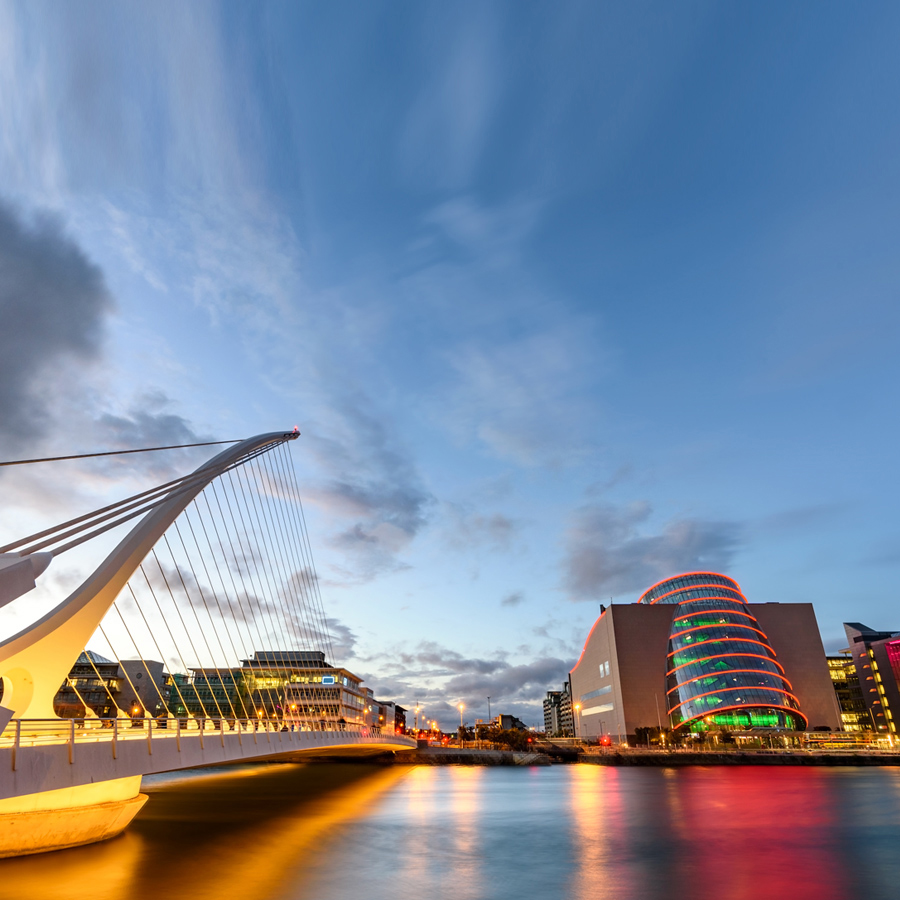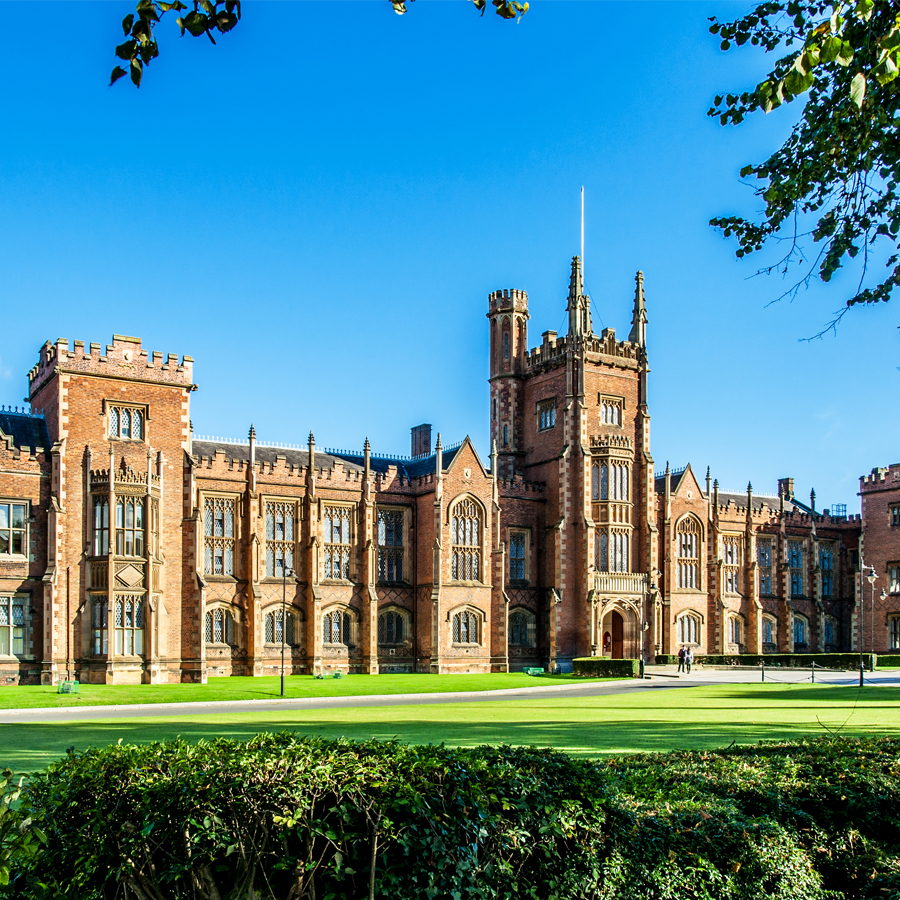As the global economy reopens for business, Ireland’s unprecedented economic growth puts it first in attracting foreign direct investment and exporting its healthy industrial segments.
Government leadership
Decades of heightened financial relations between the US and Ireland have helped position the European nation as an innovation hub. Despite totaling only 1.5% of the US’ population, American FDI into Ireland sat at $390 billion in 2020, greater than the combined US investment in Brazil, Russia, India, China and South Africa.
A large percent of these investments come from American multinationals that have chosen Ireland as a launching pad into the EU and nearby markets, such as Google, Amazon, Paypal and Twitter. More than 950 American subsidiaries exist in Ireland in areas such as chemicals, biosciences, pharmaceuticals, medical devices, information and communications technology and financial services. Subsequently, FDI from Ireland into the US reached around $240 billion in 2020, making it the ninth largest foreign contributor of wealth in the country.
The US also remains a key export market for Ireland, with almost 900 Irish companies currently exporting to the North American nation.


IBEC
Ibec is Ireland’s largest lobby and business representative group. Our purpose is to help build a better, sustainable future by influencing, supporting and delivering for business success. With over 260 employees, Ibec engages with key stakeholders in Ireland and internationally through our six regional offices and our Brussels office, along with an extensive international network in the UK and US.
Ibec positions are shaped by our diverse membership, which range from small to large, domestic to multinational and our 39 trade associations cover a wide range of industry sectors. Ibec members employ over 70% of the private sector workforce in Ireland.
As well as lobbying, Ibec provides a wide range of professional services and management training to members on all aspects of human resource management, occupational health and safety, employee relations and employment law.
Financial Services
Ireland’s financial services sector has grown considerably since the 2008 banking crisis. It now represents almost 25% of Ireland’s corporate tax income and contributes around $20.5 billion to the nation’s GDP. Due to its low corporate tax and educated workforce, Dublin has attracted more than 9,000 corporate entities in the sector, particularly in the areas of fund administration, aircraft leasing and insurance. These companies now administrate more than $5.5 trillion in global assets and support more than 52,000 workers.
The sector has recently been swayed with the withdrawal of Ulster Bank and KBC Bank announced in 2021, which has opened up opportunities for existing players and many financial services entities considering a new EU base following Brexit. A total of 135 financial services companies moved to Dublin between mid-2016 and early 2021, with a quarter of them related to Brexit.


Tech and Innovation
Ireland has successfully grown an innovation-based ecosystem through the creation of a comfortable policy environment for technology companies and aggressively building its local skills capacity. The nation is now the second-largest exporter of information and communication technology, with earnings from the segment of around $53 billion per year.
The market has attracted 16 of the top 20 global technology companies and the top three enterprise software providers, including tech giants such as Microsoft, IBM, Google and HP who have each had a long-term presence in the country. More than 106,000 citizens are now employed in tech-related segments.
Talent and research and development is also being spurred by Ireland’s New Technological Universities, of which five were created through consolidation since 2019. The country now aims to grow its innovative channels with its new burgeoning gaming software, medtech and fintech sectors.
Food and beverage
Ireland’s agri-food sector has skyrocketed in importance and is now the largest exporter of dairy, beef and lamb in the European market and the largest net exporter of food and drink to the UK. In 2019, the US market rose to become Ireland’s second largest market for agri-food exports, an increase of 203% since 2010.
Given its widening international footprint, the industry has reached an annual turnover of around $29 billion. It now accounts for 94% of external flows from Ireland’s agriculture and 50% of direct expenditure by the entire local manufacturing sector. The segment is also a huge supporter of SMEs and regional employment, with more than 230,000 workers spread out across the country.
With the continued success of its adjacent tech and innovation sectors, Ireland is now positioning itself to take a huge slice of the global agritech boom, which is expected to grow in value from $18 billion in 2019 to $42 billion by 2027.


Medtech
The Irish medical technology sector has come a long way since its infancy in the 1990s with only around 50 associated companies in the market. Now, Ireland is one of the top five global medical technology hubs in the world and the second largest exporter of health science technologies in Europe, with annual exports worth around $13.4 billion destined for more than 100 global markets. Around 350 related businesses employed around 380,000 workers in 2022, making the local sector the largest employer of medtech talent in Europe per capita.
The segment is also supported by Ireland’s larger life sciences industry – which includes all ten of the world’s top ten global pharmaceutical enterprises – and the country’s advanced research and development ecosystem. The government is actively extending funding to the sector, largely through its $531-million Disruptive Technologies Innovation Fund established in 2018. More than 70% of the projects selected by the initiative in 2022 fell under the medical technology umbrella.
Real estate and construction
The construction sector in Ireland is seeing a rise in importance as the country works to support its rapidly rising population. According to the state census, the number of residents in the country rose by 360,000 between 2016 and 2022, with only 120,000 homes being built. In response, the government launched the Housing for All initiative in 2021 with the goal of avoiding a housing crisis by constructing 33,000 new homes every year until 2030.
Investment in building is expected to reach $34 billion in 2022, with the largest spend ever of $13 billion put down by the state towards this segment in the same year. The construction industry employed almost 160,000 in Q1 2022, representing around 6% of all employment in the country. With a rising number of graduates in engineering, manufacturing and construction, the sector is expected to flourish.


Sustainable tourism
Traditionally, Ireland’s tourism sector is one of its largest indigenous industries and biggest regional employers, representing revenues of around $10 billion and supporting around 260,000 jobs in 2019. The US is Ireland’s second-largest source of visitors, with 1.7 million American travellers choosing a short-term stay in Ireland in 2019.
Although the pandemic hit the industry hard, Ireland is now banking on new trends and invigorated funding to match 2019 levels of inward tourism. Under its Budget 2023, the government penned almost $32 million towards marketing the country in foreign markets and updating its local infrastructure and offerings. Additionally, the nation is now positioning itself as a leader in sustainable tourism under its promise to cut emissions by 51% by 2030 and achieve net-zero carbon emissions by 2050.
Talent and Higher Education
One of the key factors in Ireland’s strong economic growth is its long-term focus on education and training, which allowed the country to rank third in highest level of education among OECD members in 2022. The sector has also greatly benefited from Brexit, with applications from EU states tripling between the 2016 referendum and the 2022 school year. The state has allocated 6.9 billion euros in spending towards education as part of its National Development Plan 2021-2030, which includes increasing school capacities to meet new demand, integrating digital tools into training infrastructure and focusing on technological schools and skills development.
Currently students participating in tertiary level education in information and communications technology remains low, but one percentile higher than the 6% average in all OECD nations in 2022. The country’s seven universities, seven education colleges and 14 technology institutes are also key centers for the country’s robust research and development capabilities, which is a main attractor for foreign companies looking to grow a presence in the market.

